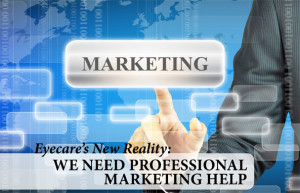We’ve all heard the statistics on how bad news outsells good news every day of the week. Just turn on your local TV news or look at the front page of your daily paper. Those who rushed into social media to promote their businesses quickly learned that blasting your network with happy stories or self-serving promotions got you blocked or ignored by almost everyone. Digital consumers are so good at filtering advertising that they only listen to product messages that make them happy or solve a problem.
How did online eyewear marketers establish a strong position in the marketplace? Using tools available to all of us online, they discovered what optical consumers hate about bricks-and-mortar retailers and relieved their pain.
What Pains Does Online Shopping Address?
- Don’t like pushy sales people? How about one easy price?
- Hate the hassle of shopping? Here’s a quick app to help you pick out frames.
- Afraid of buying from unknown online retailers? How about getting your first pair free?
- Not sure if you’re getting the best price? Here’s out low price guarantee.
The Bricks-and-Mortar Response
Now that all of your online competition is highlighting the reasons consumers shouldn’t buy from you, it’s time to take action. Here are some solutions to break through to your optical customers and relieve their pains. Let’s start where consumers are searching for information on what eyewear to buy.
Your Website
For years optical website design has focused on showing off the ECP’s investment and telling visitors how great their service is. Instead, online messaging and design should focus on the following:
- Tired of searching for frames online? Come here for our real-time, expert advice.
- Love your glasses, but want to see better? We have the best in lens designs to match designer frames.
- Fed up buying dated knockoffs from online retailers? We have the latest in trending eyewear from top designers.
- Worried about how your complex vision needs will be met by non-experts working phone lines from overseas? Meet with your local licensed eyecare professional for the best possible vision outcome.
These messages can convert website visitors into appointments and in-store buyers. They capitalize on your competitors’ weaknesses and emphasize the problems and difficulties of shopping the Internet for eyewear. They make your business a solution for Internet shopping pains.
Social Marketing
There’s no question that 2-for-1 offers, 50-per-cent-off deals and free eye exams are common eyewear promises and they certainly have consumer-stopping power. But keep in mind that in today’s digital information age, consumers are skeptical of exaggerated promotional offers. The fear of poorly fitting eyewear, compromised vision and poor quality are often amplified when people are buying for their children or referring friends and relatives. Identifying problems such as these and the solutions you offer to them are great topics for email and word-of-mouth campaigns. Emphasizing the risks of buying online and making your business the solution is a good recipe for social sharing.
Sample Messages
- We Make All Our Customers See Better with Just One Visit.
- The #1 Learning Disability is Poor Vision: Book an Appointment Today.
- Spending Hours Online Looking for Eyeglasses? Try Our 10-Minute Fit – 15 Minutes for Kids.
These messages might not fit your store or retail focus perfectly but they should give you a starting point for a new approach, one that emphasizes the value of meeting consumer needs. Whether you’re using social media, emails, outdoor signage, websites or Internet ads, breaking through to new customers and converting them to in-store shoppers requires a different strategy in today’s competitive optical market. Identifying your different clients and relieving each of their pains will set you on a path to new business growth.








